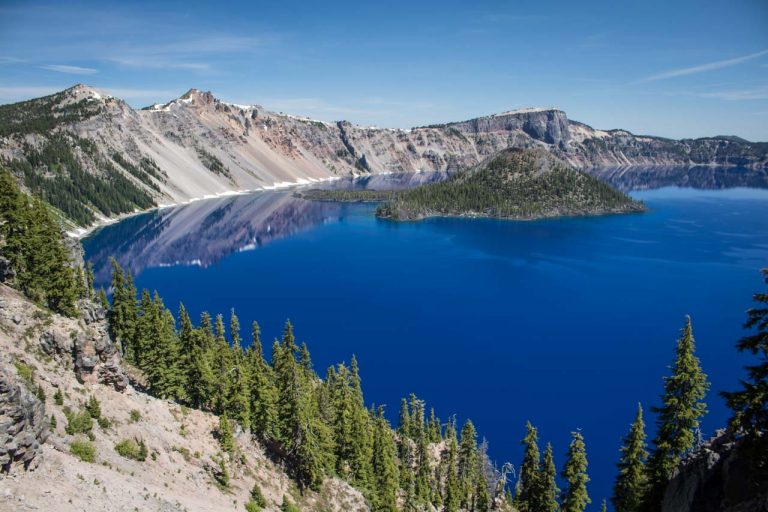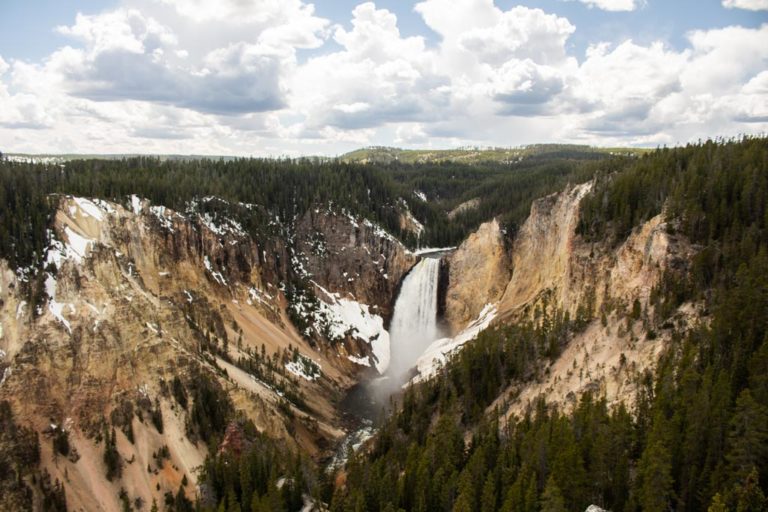The Five Villages of Cinque Terre
The eastern Rivièra of Liguria, on the northwestern coast of Italy, features some of Mediterranean Europe’s most spectacular coastlines. The absolute star attraction of this dramatic stretch of coastline is Cinque Terre National Park, or Parco Nazionale Parco Nazionale delle Cinque Terre in Italian. This UNESCO World Heritage Site comprises an 18-kilometer-long (11-mile) coast of imposing sea cliffs, steep terraced vineyards and five photogenic coastal villages—the Cinque Terre villages.
It is these five historic villages that gave the region and national park their very names. Cinque Terre means literally “five lands.”
Although this is a rather small national park, it does offer enough to keep you occupied for several days. Exploring each of the five villages of Cinque Terre takes up a few days, while exploring the park on one of the many hiking trails—the 9-kilometer (5.5-mile) coastal trail known as the Blue Trail, or Sentiero Azzurro, connecting all five villages is phenomenal—or relaxing on one of the beaches accounts for another day or two.
The Five Cinque Terre Villages
From north to south, these are the five Cinque Terre villages, all connected to one another by a railroad and various hiking trails.
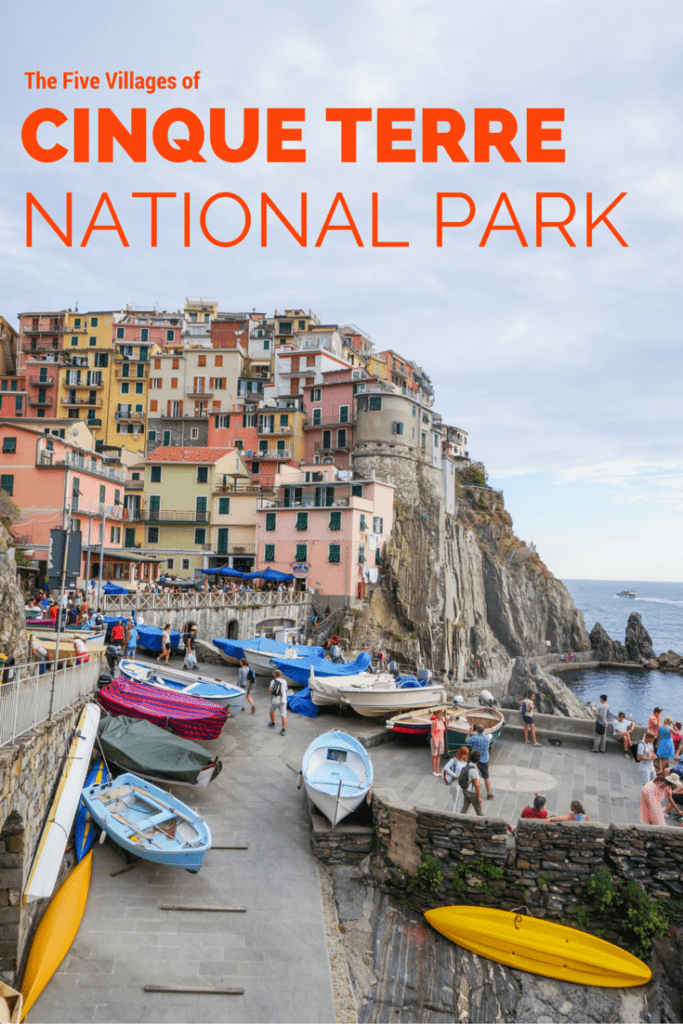
Monterosso al Mare
The northernmost of the five villages, Monterosso al Mare boasts the national park’s most beautiful beach, so if you want to go sunbathing and swimming, do it here. With hotels, restaurants and stores selling wines and other local products dotting the town, this is also the most modern and developed, even resort-like, of all the Cinque Terre villages. Sheltered from the elements by tall cliffs and hills, Monterosso al Mare consists of two parts, the old and new town, separated by an imposing rock formation and connected by a tunnel.
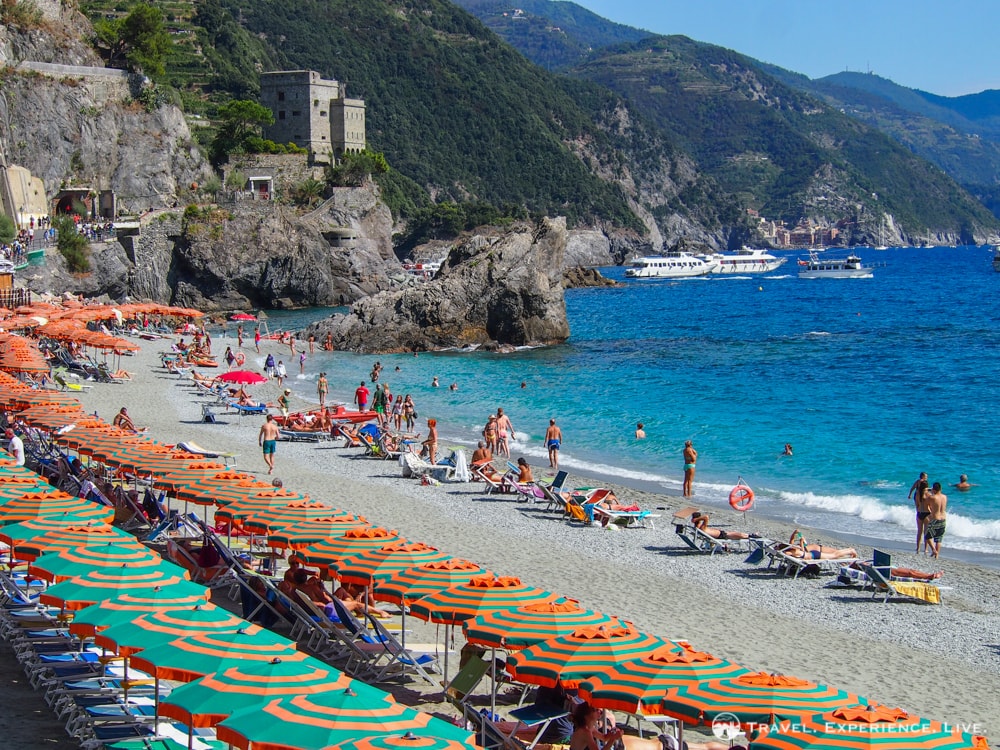
In addition to the beaches and the shops, main attractions include the old partially ruined Castle and the Abbey and Church of San Francesco, which houses a few great paintings, including The Crucifixion by Van Dyck.
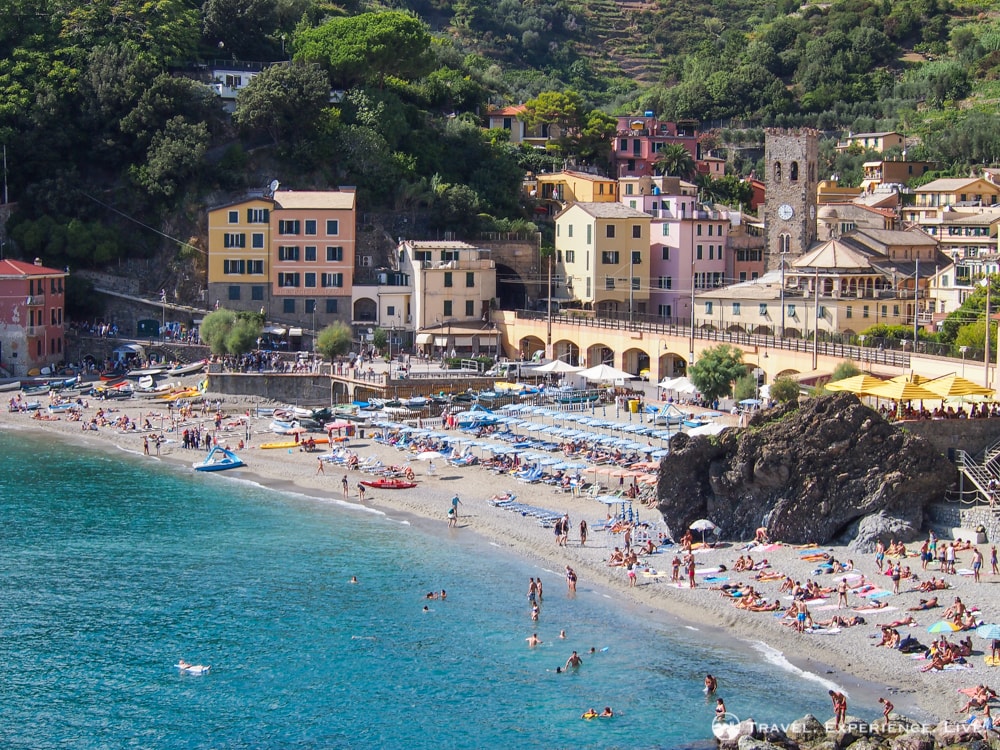
Vernazza
Just to the south of Monterosso al Mare, although hidden behind the coastal cliffs, lies Vernazza. This is often considered to be one of the last remaining real fishing villages in northwestern Italy. The village has a natural pier and oval-shaped harbor, consequently making it a great place for boating and, as such, fishing.
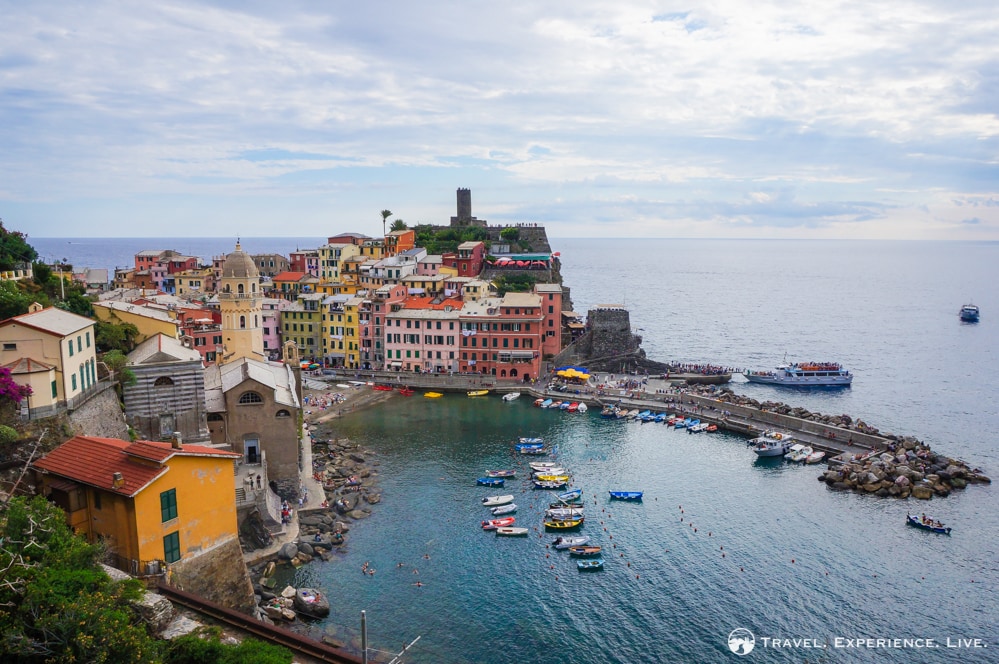
The views of Vernazza when approaching the village on the Blue Trail are phenomenal. Vernazza is one of the most picturesque of the Cinque Terre villages and, while it doesn’t feature a large sand beach, it is a great place to spend a few hours. Main attractions include the Doria Castle and the watchtower, the Church of Santa Margherita d’Antiochia and the lively restaurant scene.
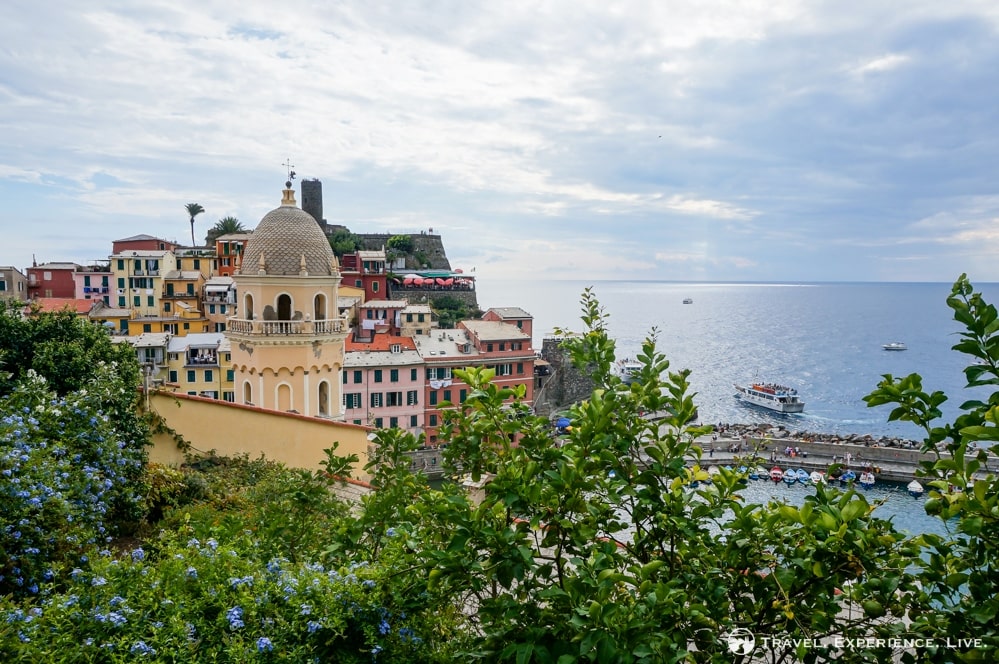
Corniglia
Located atop a steep cliff, Corniglia is the only one of the Cinque Terre villages that can’t be reached directly by boat. It overlooks the Mediterranean Sea, while terraced vineyards surround the village on its three other sides. The village is reached by train, on foot along one of the hiking trails or by climbing up the 33-flight stairway after mooring your boat.
Corniglia, photo by Chensiyuan via WikimediaIt’s a spectacular village, commanding a great view of the rest of the coastline, including the other four villages. Corniglia is arguably the quietest of the five villages. Make sure to pay a visit to the Church of San Pietro, built in 1334 and regarded as one of Cinque Terre’s most important Gothic-Ligurian buildings.
Houses in Corniglia, photo by Nick Grosoli via FlickrManarola
Arguably the most beautiful of the five Cinque Terre villages, Manarola is made up of gorgeous pastel-colored houses. Perched steeply on a coastal hill, it also encompasses a small cove that functions as a little harbor. There are a number of hiking trails around the village, offering extraordinary views, making it impossible to snap a bad picture of this village.
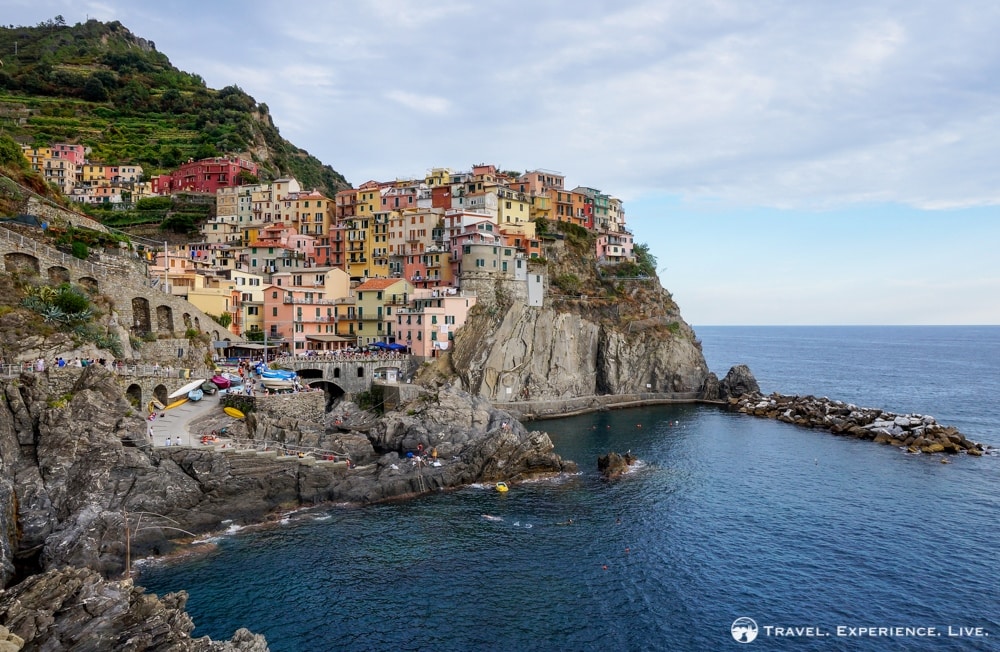
Manarola is famous for its local wine, Sciacchetra, which has been a much-sought-after brand since Roman times. Visitors can swim in the calm waters in the harbor, while the 14th-century Church of San Lorenzo is a historic landmark that’s worth visiting.
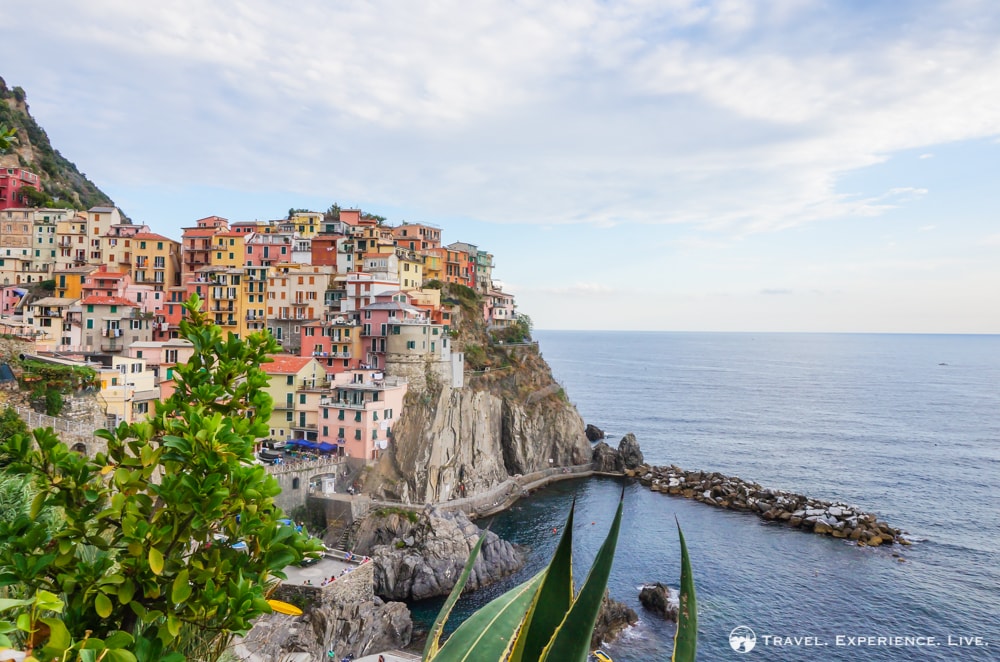
Riomaggiore
Set on the steep banks of a river, the eroding forces of which have essentially created a kind of ravine in between two cliffs, Riomaggiore is the southernmost of the Cinque Terre villages. This village dates from the 13th century and its main attraction is the Riomaggiore Castle, which dates from 1260.
Riomaggiore at night, photo by Chris Locke via FlickrRiomaggiore is yet another overwhelmingly, almost surreally, photogenic village, famous for its historic atmosphere and wine-making. Terraced vineyards cover the hills behind the village, a feature typical of Cinque Terre National Park and one of the reasons UNESCO declared it World Heritage in 1997.
Riomaggiore, photo by Lassi Kurkijärvi via Flickr




